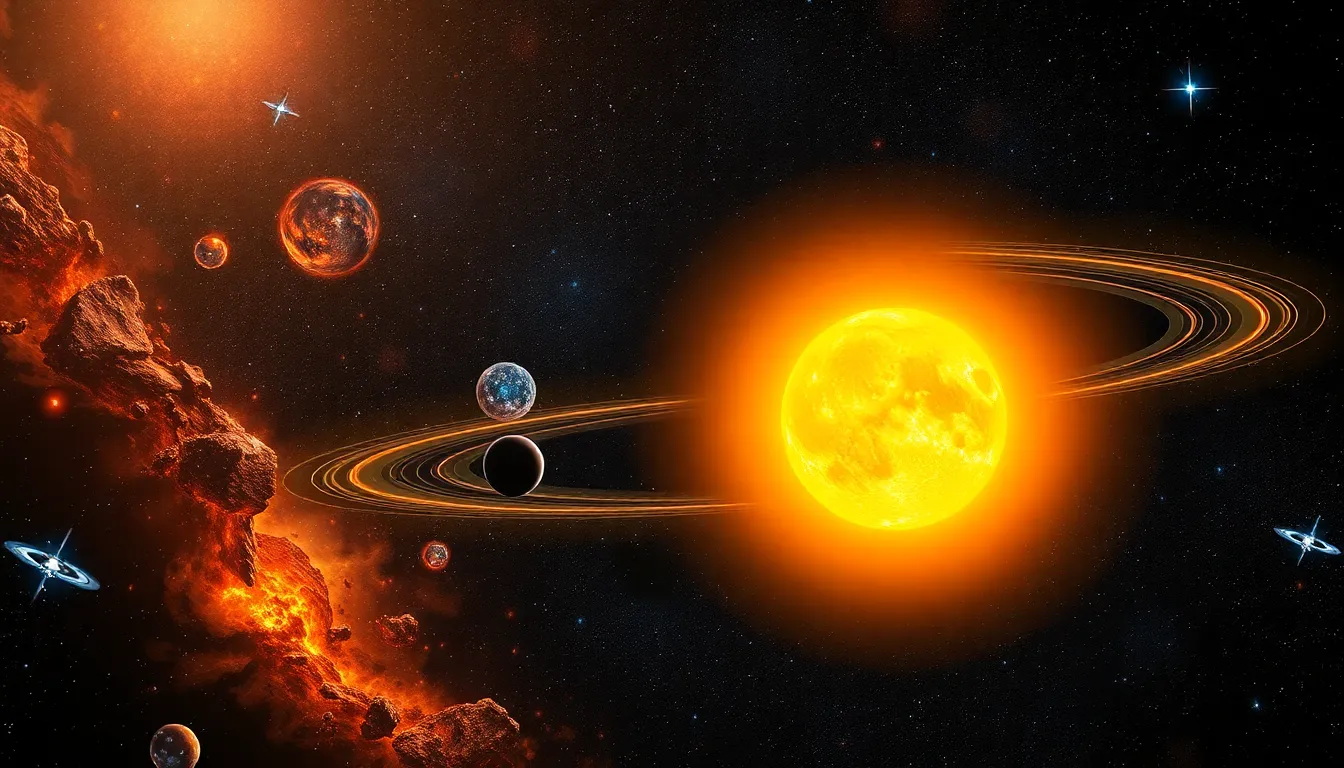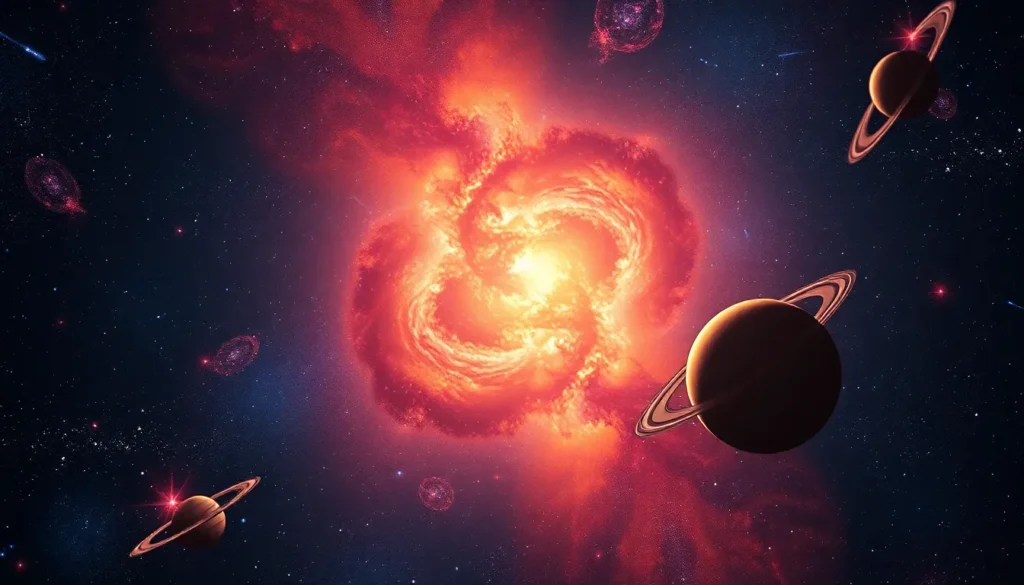Table of Contents
ToggleThe Voyager probes are like the ultimate cosmic adventurers, boldly going where no spacecraft has gone before. Launched in the late 1970s, these little champions have traveled farther than most of us will ever dream of, leaving the safety of our solar system and diving into the mysterious depths of interstellar space. Imagine them as the intergalactic equivalent of that friend who just can’t resist exploring every corner of a new city—except they’re doing it at speeds that would make a cheetah jealous.
Overview of Voyager Probes
Voyager probes represent pivotal milestones in space exploration. Launched in the late 1970s, they have traveled beyond the heliosphere into interstellar space, collecting invaluable data.
Historical Background
NASA launched Voyager 1 and Voyager 2 in 1977, aiming to explore the outer planets. Voyager 1 flew by Jupiter in 1979 and Saturn in 1980, while Voyager 2 visited Jupiter, Saturn, Uranus, and Neptune. Each probe sent back groundbreaking images and scientific discoveries. An important aspect of their mission was to utilize gravitational assists, allowing them to maximize their reach. Both remain operational, consistently sending data back to Earth.
Mission Objectives
Key objectives focused on gathering information about the outer planets and their moons. Probes aimed to study planetary atmospheres, magnetic fields, and ring systems. Scientists also sought insights into solar wind and cosmic rays. Investigating the heliosphere’s boundaries formed a vital part of their mission. Each probe continues to contribute to our understanding of interstellar space, enriching knowledge that extends human comprehension of the universe.
Exploring the Heliosphere

The heliosphere is a vast bubble surrounding the solar system, formed by the solar wind and the Sun’s magnetic field. It extends well beyond the orbit of Pluto, defining the boundary between solar and interstellar environments.
Definition and Structure
The heliosphere comprises several layers, including the solar wind, termination shock, and heliopause. Solar wind pushes outward from the Sun, creating a flow of charged particles. A region called the termination shock marks where the solar wind slows down, encountering interstellar medium. The heliopause acts as the boundary separating the solar wind from the interstellar wind, creating a unique environment. Voyager probes have significantly enhanced our understanding of this structure, providing crucial data about its size and dynamics.
Significance in Space Research
Understanding the heliosphere plays a critical role in space research. Probes like Voyager 1 and Voyager 2 assess its boundaries, revealing how cosmic rays interact with solar wind. Research in this area aids the comprehension of how solar activity influences the Earth’s atmosphere. Exploring the heliosphere also sheds light on the behavior of other stars and their surrounding environments. Data collected from the Voyager missions has advanced knowledge about solar wind properties, enhancing predictive models for solar weather events.
Journey into Interstellar Space
Voyager probes continue their extraordinary journey beyond the heliosphere into interstellar space, providing invaluable insights into this uncharted region. This phase marks a significant transition from the solar winds of the heliosphere to the different environment of the interstellar medium.
Transition from Heliosphere to Interstellar Medium
Voyager 1 crossed the heliopause in August 2012, entering interstellar space and signaling a landmark achievement. This transition indicates the point where solar winds from the Sun no longer dominate. It encounters particles from outside our solar system, enhancing comprehension of the boundary where solar influence ends. Voyager 2 followed suit, making its transition in November 2018, confirming the existence of an interstellar medium that varies in density and composition. These movements reveal how the Sun interacts with the surrounding galactic environment, shaping future research directions.
Key Discoveries and Data
Significant discoveries emerge from Voyager’s exploration of interstellar space. The probes detected increased cosmic rays, indicating the influence of nearby supernovae on the interstellar medium. Additionally, Voyager 1 observed low-energy cosmic ray increases, suggesting a shift in the local galactic environment. Data received from both Voyager probes provides unprecedented insights into the magnetic field structure beyond the heliosphere. Research indicates that interactions between solar wind and interstellar particles impact space weather, enhancing understanding of cosmic phenomena. Together, these findings contribute to a comprehensive view of the universe’s boundaries and its dynamic nature.
The Impact of Voyager Probes
Voyager probes significantly shaped our understanding of the heliosphere and interstellar space. Their data collection and scientific discoveries continue to resonate through the fields of astronomy and astrophysics.
Contributions to Science
Voyager probes revolutionized scientific knowledge related to the heliosphere. They provided critical insights into solar wind dynamics, cosmic rays, and magnetic fields. Voyager 1 and Voyager 2 delivered detailed data regarding the heliopause, enhancing comprehension of how solar and interstellar wind interact. Scientists now grasp the boundaries of our solar system more clearly, thanks to the probes’ long-range measurements. Their findings also improved predictive models for solar radiation and its effects on Earth’s atmosphere.
Future Implications for Space Exploration
The advancements stemming from Voyager data set the stage for future exploration beyond the solar system. Understanding the heliosphere’s structure aids in developing missions to distant exoplanets. The insights gained influence the design of next-generation spacecraft, ensuring they can navigate interstellar environments. Scientists envision missions to collect samples from comets and asteroids in the outer solar system. New technologies, informed by Voyager’s legacy, promise even deeper explorations into galactic phenomena.
The Voyager probes stand as monumental achievements in the quest to understand our universe. Their journeys beyond the heliosphere have not only expanded human knowledge but also inspired future generations of scientists and explorers. The data collected continues to influence research on solar phenomena and cosmic events, highlighting the intricate relationship between our solar system and the broader galaxy. As these probes venture further into interstellar space, they pave the way for new discoveries that could reshape our understanding of the cosmos. The legacy of Voyager is a testament to human ingenuity and the relentless pursuit of knowledge beyond our earthly boundaries.




